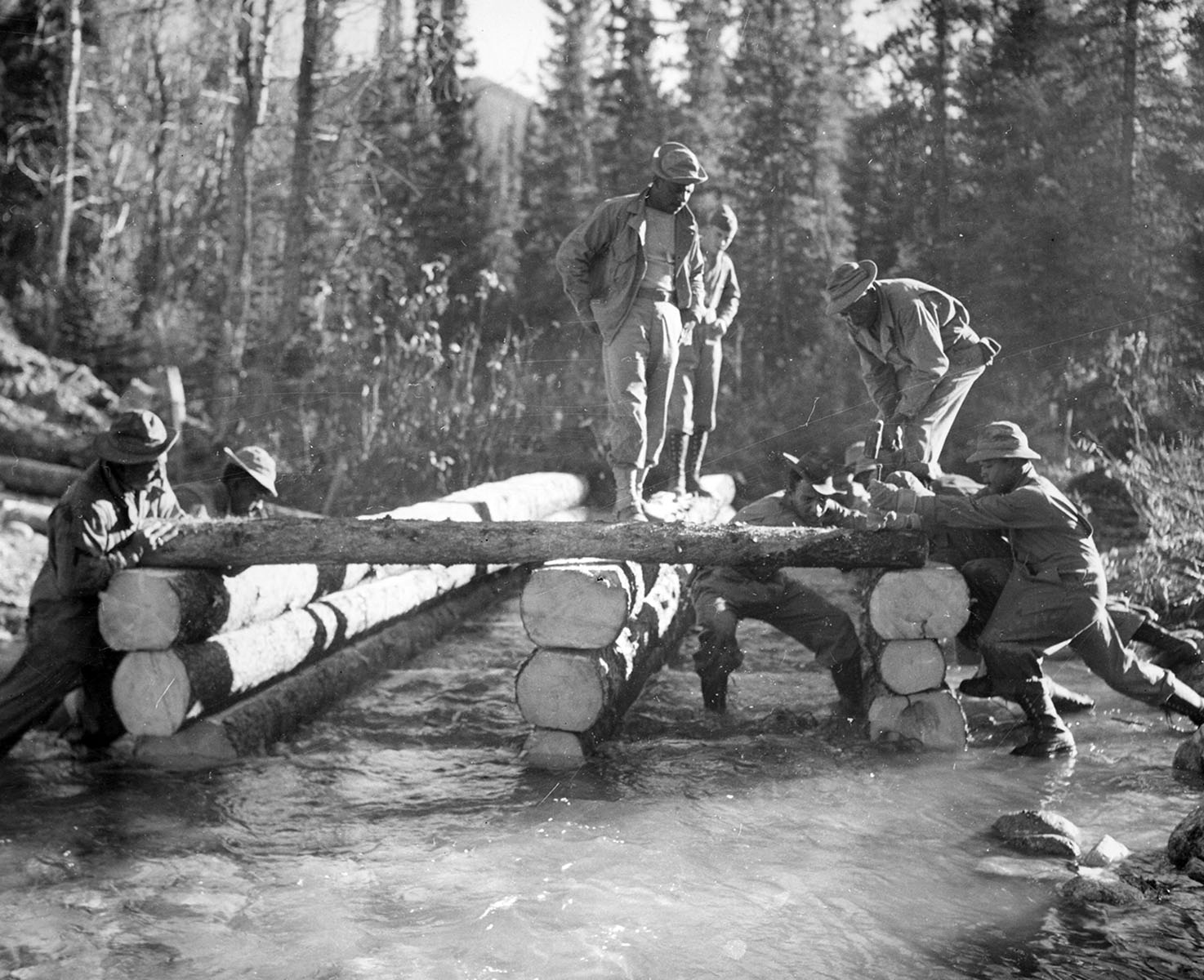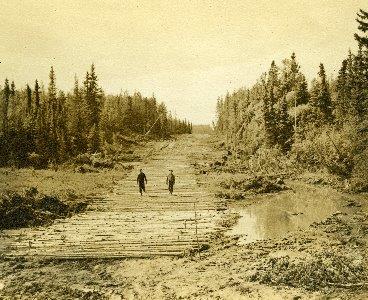In the dark days following the December 7, 1941, Japanese attack on Pearl Harbor, American leaders were extremely concerned with the vulnerability of the Pacific Northwest and Alaska to Japanese attack. Japanese naval and air superiority prompted military leaders to propose a land route that would safely transport troops and equipment to Alaska to isolated outposts that otherwise would have to be supplied by air and sea. Wartime necessity put into action prewar plans for the construction of a road through the Canadian wilderness from Dawson’s Creek to Fairbanks, Alaska. The year 2017 marks the 75th anniversary of the completion of the1,685-mile-long Alaska Highway.
In early 1942, President Franklin Roosevelt gave formal approval to the highway project in coordination with the Canadian government. The Army immediately sent Engineers to Canada and Alaska to start construction at each end of the proposed road. The plan was to complete an initial crude pioneer road largely by Engineer soldiers and some civilian contractors. Once finished and usable by military traffic, civilian contractors working for the U.S. Public Roads Administration (PRA) would maintain and upgrade the road, bringing it to permanent highway standards. Construction began in March of 1942, as soon as the first Engineer troops arrived.

African American Engineer Soldiers construct a log bridge on the Alaska Highway
The Army established an Engineer provisional brigade of approximately 9,000 men that included the 18th, 35th, 93rd, 340th, and 341st Engineer Regiments. The 93rd was a segregated African American unit, and later it was joined on the project by the 95th and 97th African American Engineer Regiments. Elements of the 29th and 648th Engineer Topographic Battalions, as well as the 73rd and 74th Engineer Companies, were also tasked with building the road. A total of 10,607 U.S. Army Engineer soldiers worked on the road, of which 3,695 were African American.
It is hard to overstate the difficulties encountered in building the Alaska Highway. First, the climate dictated that there were only four months of good construction weather, and even then poor conditions hindered topographic surveys, route reconnaissance, and construction itself. Frequent rain caused delays. Flies and mosquitos tormented the soldiers. The rest of the year brought extreme cold and deep snow. Second, soldiers were forced to live in tents year-round and frequently had to subsist on monotonous rations. Lack of heavy equipment, especially specialized machinery and tools, meant much of the clearing and transport work had to be done through arduous manual labor, exhausting soldiers already working extra shifts during the long summer days.
Lastly, the terrain itself was perhaps the largest obstacle. The area was largely uncharted, so even the basic mapping and route selection had to be done while the road was under construction. Crossing rivers was a particular challenge due to ice and ice floes in the winter and flooding in the spring and summer, but Army Engineers built nearly 200 bridges along the road. Two other elements of the terrain were especially problematic—muskeg and permafrost. Muskeg is wet peat bog, and when avoidance was not possible, Engineers cleared away the muskeg and allowed the area to dry. Permafrost—permanently frozen earth under a top layer that is not frozen year-round—was more difficult to overcome. Engineers built rough corduroy roads of wood and other vegetation, adding earth and rocks that insulated the permafrost beneath so it did not melt and render the road unusable.


This bulldozer working on the Alaska Highway was buried by a landslide, one of the hazards Engineers encountered (left).
A typical example of a corduroy road, necessary to build a road over the Alaskan permafrost (right).
The two groups constructing the Alaska Highway met on October 25, 1942, and a dedication ceremony on November 20, 1942, formally opened the road to military traffic. Engineer units continued to improve and maintain the primitive road through the winter of 1942, though troops began departing as 1943 began. By the summer of 1943 the PRA had taken over the task of improving and maintaining the road through the end of the war. In April 1946 the Canadian Government took control of the sections within its borders.
Though the Japanese threat to Alaska and Canada that had prompted the construction of the Alaska Highway had faded by 1943, the road nevertheless served as a vital conduit for the construction of airfields and other military infrastructure. This infrastructure served not only routine coastal defense but also was a vital base to transfer Lend-Lease aircraft to the Soviet Union during the war. The highway opened to the public in 1948, allowing access to remote areas of Canada, and has become a popular scenic tourist route, a notable legacy for what was a significant military engineering achievement of U.S. Army Engineers.
* * *
November 2017